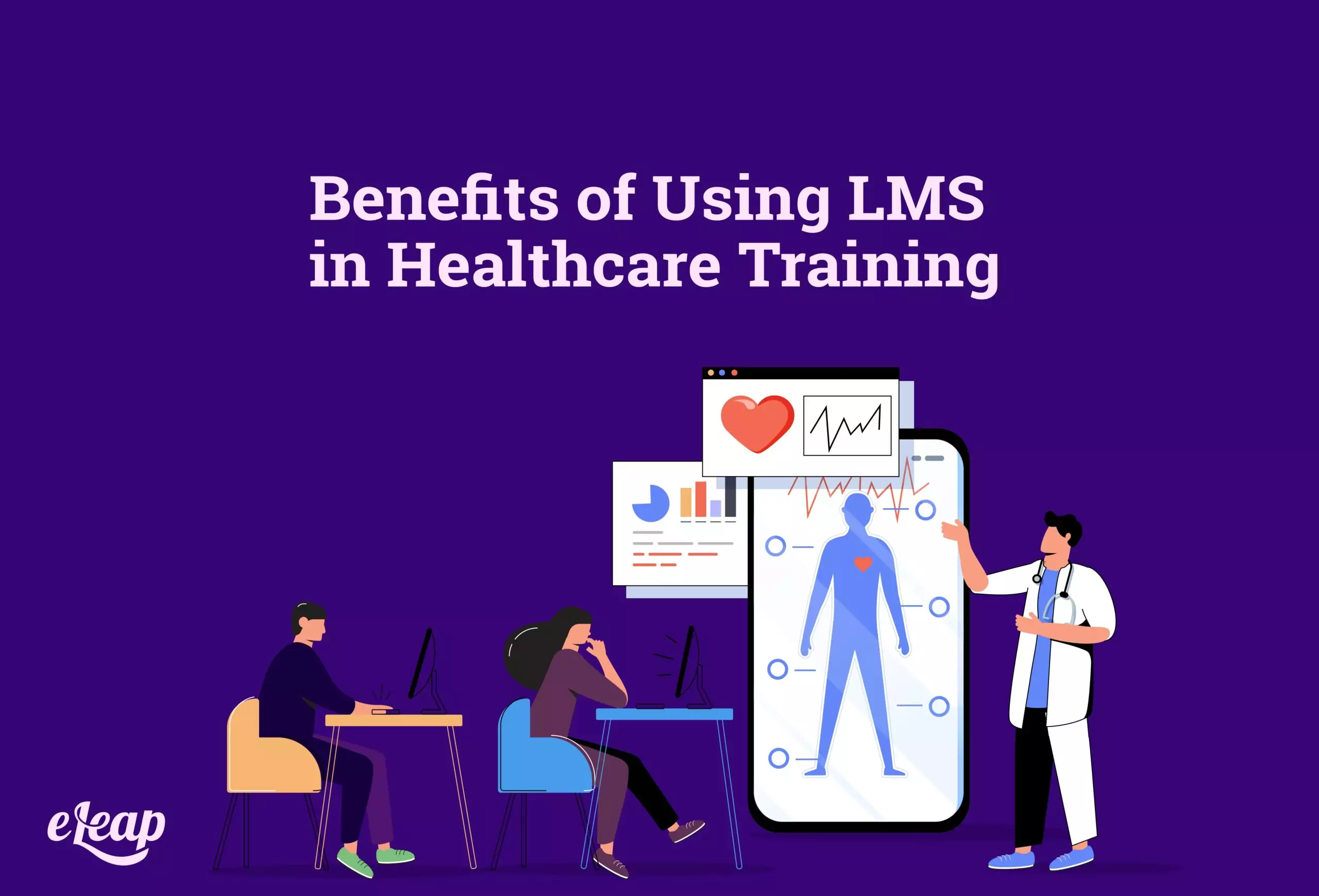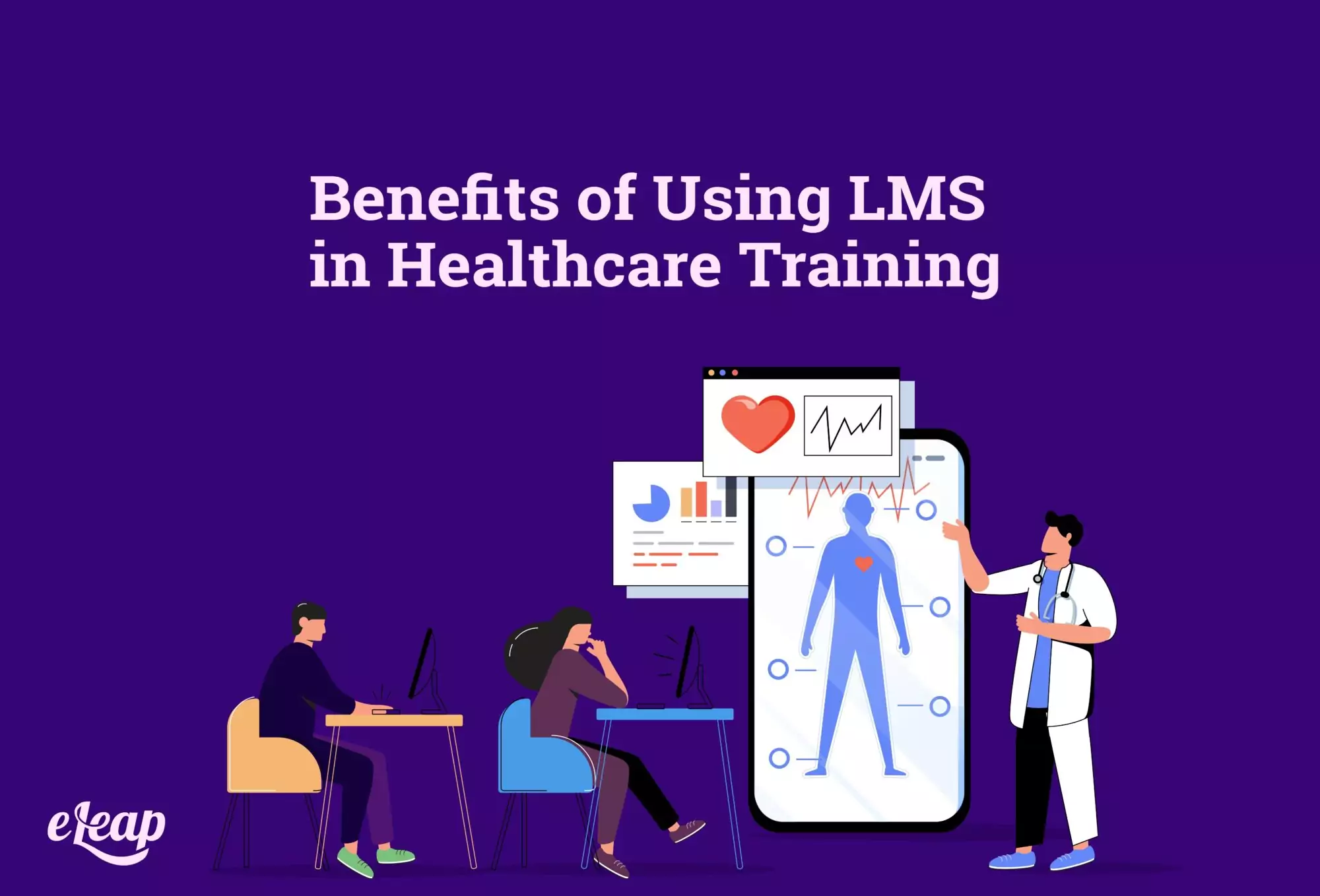Benefits of Using LMS in Healthcare Training

LMS and the healthcare industry are both at points where they are experiencing massive growth. In ten short years, the LMS portion of the eLearning industry has increased its revenue by nearly six times.
Healthcare training has been experiencing a similar growth pattern. The demand for traveling nurses and other positions has grown substantially over the last five years, partially because of the pandemic.
Breakthroughs in medicine, medical treatment, and increased research have led to unprecedented increases in medical knowledge. These knowledge increases have led to a changing landscape of teaching medicine, including healthcare training and clinical strategies.
These two industries stand to benefit from one another immensely. Before we can highlight these benefits, it’s important to be sure you understand LMS and the advantages of this style of eLearning.

What is LMS
LMS is defined as an all-inclusive online platform that provides students and course-takers with one central dashboard. This dashboard provides access to training, notes, resources, quizzes, exams, and direct contact with instructors and peers.
Alternatively, LMS provides instructors with direct student contact and resources like course progress, student performance, data, and other reports. LMS provides an efficient way for learners and instructors to maintain a comprehensive learning experience from remote locations.
LMS platforms deliver content and learning materials at a rapid pace. This delivery allows learners to progress through the material at their own pace. At the same time, their instructor monitors it in real-time.
These elements give LMS the fast-paced characteristics of at-home learning with the structured curriculum and environment. This unique formula eases issues of accessibility and scheduling conflict and the restrictiveness of social distancing mandates.
Benefits of LMS
There are some of the most impactful benefits for learners and instructors involved with LMS.
- Students and instructors save time, money, and other resources by participating in LMS
- Unlike other home-learning programs, there is a centralized organization and workload management system for learners and instructors
- Access to uniform, standardized, unconventional, and updated information, respectively
- Customizing the material is easily accomplished based on a case-by-case basis
- Availability of tracking and progress for instructors and learners to monitor progress
- Benefits multiple styles of learning, including visual and auditory, by incorporating multi-media lessons as well as instructor lectures
- Excellent communication between learners and instructors
- Keeps organizations compliant with regulations and rules established for educational programs
- Increases learning through methods of engagement
- Improved quality of education through access to resources and constantly updated information
- Simplified onboarding and training processes that can constantly be updated to meet evolving industries
It’s easy to see how efficiently LMS provides a seamless and uniform learning experience for students involved. This documented and benchmarked training is a great way for learners to give interested parties a glimpse into how extensive their training and coursework were.
Many people view remote learning as a downfall in potential educational environments. However, it’s hard not to recognize the benefits of having a comprehensive system like LMS with a structure like this.
Let’s take a glimpse into the healthcare training world to see how these two overlap.
Healthcare Training
One of the ways information has spread and contributed to increasing knowledge is by healthcare organizations sharing things they’ve learned with different networks. Through internal cooperation and communication, the healthcare training industry has improved its efficiency and effectiveness.
By operating as one cohesive unit, the healthcare training industry has moved forward by working in conjunction with one another and not competition. This has led to healthcare training establishing a well-documented and uniform policy regarding education and curriculum.
Training providers have worked tirelessly to provide an educational environment that is constantly evolving to meet the demands of advances in medicine, science, and technology. Providing real-time access to knowledge and resources as a means to fulfill learning requirements has become standard.
Eliminating outdated texts and lessons that quickly grow obsolete has led to students and graduates with higher skill levels. These drastic changes to the training system have led to a higher quality of care in the medical industry.
The healthcare training industry has been implementing this approach for the last fifteen to twenty years. LMS has taken these same principles and implemented them in a universal platform that translates this style of education to any industry imaginable.
Joining the LMS and Healthcare Training Together
After examining both industries separately, it’s easy to see the similarities in the approach to a higher level of training and educating students. The overlapping goals and relevant dynamics make these two industries perfect for creating an environment for student success.
LMS would provide a constantly updated and all-in-one platform to provide the modern type of training and education to meet the demands of the healthcare industry. The tracked progress of students that LMS would provide is a great way to standardize education in the healthcare training industry.
This would give providers an excellent way to ensure that each student receives the same access to resources and pool of knowledge at their fingertips. Instructors can also efficiently track training and clinical to ensure no students lack in any particular area.
The level of patient care would benefit immensely from the assessment tools, and consistency LMS could provide the healthcare training industry. From a legal and administrative standpoint, there would be less risk involved by LMS providing a means for analyzing the clinical readiness of students.
Data tracking utilized in LMS could also track baseline performance to highlight areas that need improvement within the curriculum. Quality improvement is essential in healthcare education to attribute to a growing level of patient care.
While LMS providers and creators continue to improve user support and data tracking, the healthcare training and emergency medical field have the opportunity to take the reigns on this explosive growth. As technology increases, there will continue to be new ways to improve educational provider and patient treatment outcomes.